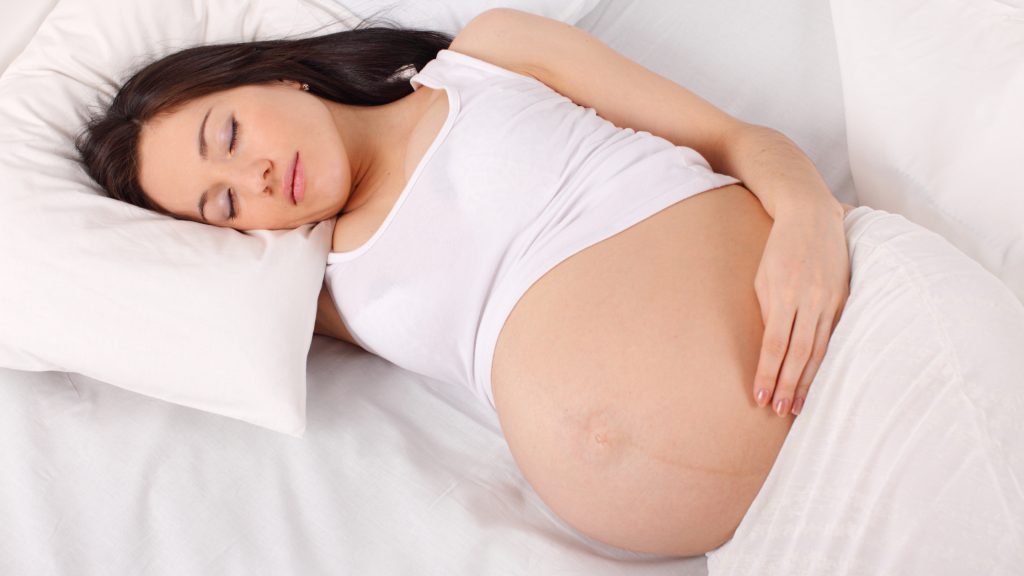The Best Sleeping Position for Pregnant Women: A Guide to Better Rest
Pregnancy is a beautiful journey, but it often comes with challenges, especially when it comes to getting a good night’s sleep.
As the body changes, finding a comfortable sleeping position can become increasingly difficult. Experts recommend specific positions to ensure both the mother and baby stay safe and comfortable during sleep.
Why Sleeping Position Matters During Pregnancy- Pregnant Woman
Pregnancy changes the body quite a lot, and this impacts how you sleep. The swelling belly, increase in weight, and hormone changes can cause discomfort and back pain and even insomnia. If you sleep in an inappropriate position, it may constrict blood flow, putting pressure on vital organs, which can compromise both maternal and fetal health.
- Best Sleeping Position: Left Side Sleeping The best sleeping position during pregnancy is on your left side, often called the left lateral position.
- Healthcare providers highly recommend it for a number of reasons:
- Improved Circulation of Blood: Left lateral sleeping will enhance the flow of blood to the placenta. This ensures your baby receives all the required nutrients and oxygen.
- Reduced Pressure on the Liver: This position does not allow the uterus to push against the liver, which is situated on the right side of the abdomen.
- Reduced Swelling: It enables the kidneys to work better and reduce swelling in the legs, feet, and hands.
- Less Heartburn: Sleeping on the left side helps avoid acid reflux and heartburn, common during pregnancy.
What About Sleeping on the Right Side or Back?
Right Side: Sleeping on the right side is usually safe, especially in the early stages of pregnancy. However, it is less ideal than the left side since it could put pressure on the liver and the vena cava, which is a major vein that carries blood to the heart.
On the Back: Sleeping on the back is discouraged once pregnancy begins. The enlarging uterus can compress the vena cava and impair blood circulation, causing dizziness or shortness of breath. The baby may also receive decreased circulation.
Read More… What is a Good Sleeping Position If You’re Nauseous?

Tips for Comfort While Sleeping- Pregnant Woman
- Use a Pregnancy Pillow: A U-shaped or C-shaped pregnancy pillow can help provide back, belly, and hip support.
- Use additional pillows for support. It helps alleviate pressure on your joints and spine by placing a pillow between your knees or under your belly.
- Use a medium-firm mattress: Choose the right mattress to accommodate the changing shape of your body.
- Raise the upper body: In case of heartburn, elevate the head of your bed a bit.
- Keep the environment cool: You tend to feel hotter than usual during pregnancy. Keep your bedroom cool and comfortable.
Establish a Bedtime Routine
Developing a regular bedtime routine can improve sleep quality. Some ideas include:
Take a warm bath or engage in relaxing activities, such as reading or listening to calming music.
Avoid heavy meals, caffeine, and screens before bedtime.
Perform gentle stretches or prenatal yoga to loosen up your muscles.
When to Seek Medical Attention
If you’re struggling to sleep despite these strategies or experiencing severe discomfort, consult your healthcare provider. Persistent sleep issues may indicate underlying concerns like sleep apnea, restless leg syndrome, or pregnancy-induced hypertension.
Final Thoughts
Good sleep is essential for a healthy pregnancy. Adopting the left side sleeping position, combined with supportive pillows and a comfortable sleep environment, can make a significant difference. By prioritizing rest, you’re not only taking care of your well-being but also ensuring the best possible environment for your growing baby.
Why Sleep Position Matters for Pregnant Woman
Your expanding uterus may stretch and press on your inner organs, blood vessels, and nerves as you continue into the second and third trimesters of pregnancy. How to sleep well will thus minimize the following risks during sleep:
Ensure adequate blood supply to the baby and uterus.
Reduce strain on the back and other organs.
Relieve discomforts due to pregnancy such as heartburn and back pain.
Positions to Avoid for Pregnant Woman
- Lying on Your Back (Supine Position)
As your pregnancy advances, lying on your back can compress the vena cava and aorta, which can:
Reduce blood flow to the baby.
Cause dizziness, backaches, or difficulty breathing.
- Sleeping on Your Stomach
Although it’s safe during the first trimester, sleeping on your stomach becomes impractical and uncomfortable as your belly grows.

Tips for Comfortable and Safe Sleep for Pregnant Woman
Invest in a Pregnancy Pillow: U-shaped or C-shaped pillows support your back, belly, and hips.
Keep Your Hips and Legs Aligned: Use a pillow between your knees to reduce lower back strain.
Elevate Your Head: If you experience heartburn, elevate your upper body with pillows or a wedge.
Keep Cool: Pregnancy increases body temperature, so make sure your room is well-ventilated.
Change Positions Often: You tend to switch sides at night and that is perfectly fine provided you sleep on your sides most of the time.
When to See a Doctor
See your doctor if you have: Persistent pain or can’t sleep. Dizziness, shortness of breath, or severe back pain. Swelling that is getting worse even though you are sleeping on your left side.
Use the Right Mattress
Your mattress is very important in supporting your back:
Firmness: Select a medium-firm mattress which provides your back with adequate support, not too hard, or too soft.
Spinal Alignment: Make sure your mattress places your spine in an anatomically neutral position.
If changing the mattress is impossible, then use a mattress topper for added support.
Supportive Pillows
Supporting pillows can make a huge difference in your sleeping posture:
Under the Knees (Back Sleepers): Raises the legs a bit so that tension on the lower back is minimized.
Between the Knees (Side Sleepers): Prevents the top leg from twisting the spine.
Under the Lower Back: A small, rolled towel or lumbar pillow can provide extra support.
Stretch Before Bed for Pregnant Woman
Gentle stretches can relax tight muscles and reduce pain:
Cat-Cow Stretch: Eases tension in the lower back.
Child’s Pose: Lengthens and relaxes the spine.
Pelvic Tilts: Strengthen core muscles and alleviate back pain.
Praying or simple stretching as part of your bedtime routine can help you unwind and prepare for restful sleep.
Read More… How to Figure Out Your Curl Type
Apply Heat Therapy
Using a heating pad or taking a warm bath before bed can relax stiff muscles and improve circulation to the affected area. Ensure the heat source is warm but not too hot to avoid burns.
Maintain Proper Posture During the Day
Good posture all day long will help prevent back pain at night. Limit sitting and standing for long periods, and use ergonomic furniture to support your spine.
Stay Active
Exercise regularly helps strengthen the muscles that support your back. Low-impact activities such as walking, swimming, or yoga can improve your back health and promote better sleep.
Seek Professional Help
If the back pain continues even after taking these steps, seek medical help. A healthcare professional may suggest:
Physical Therapy: Muscle strengthening and posture correction
Chiropractic Adjustments: Spine realignment
Medications or Supplements: Transient pain relief.
Conclusion
Back pain while sleeping is about creating a sleep-friendly environment and adopting healthy habits. Choosing the right position, investing in proper bedding, incorporating stretches, and heat therapy can help have a more restful and pain-free night. If it doesn’t go away, professional advice should be sought to identify any underlying issues.

